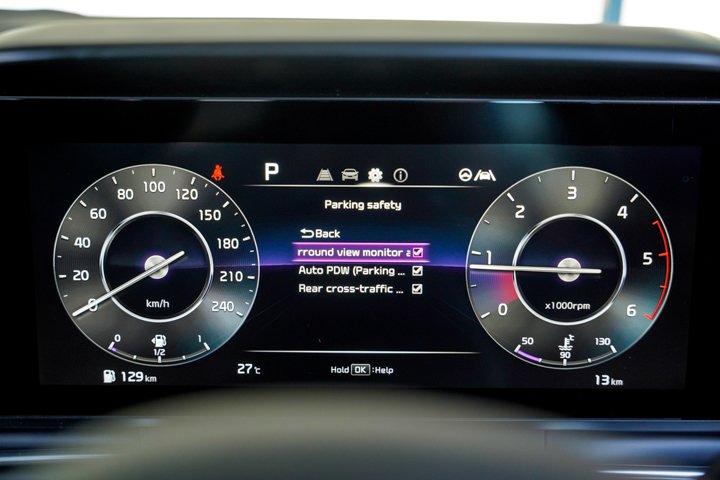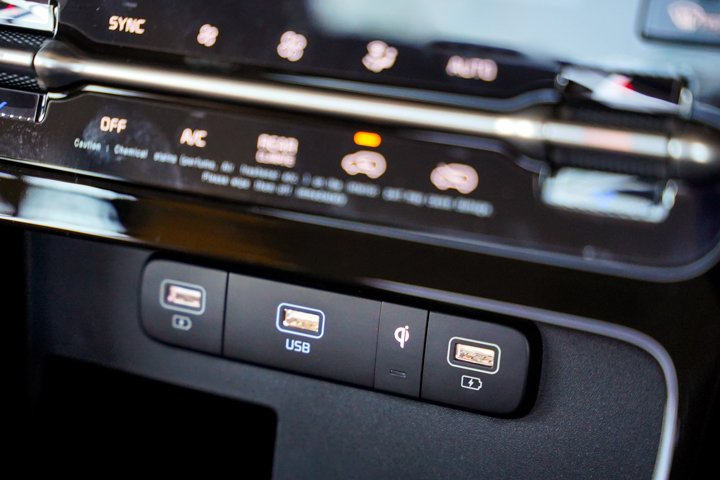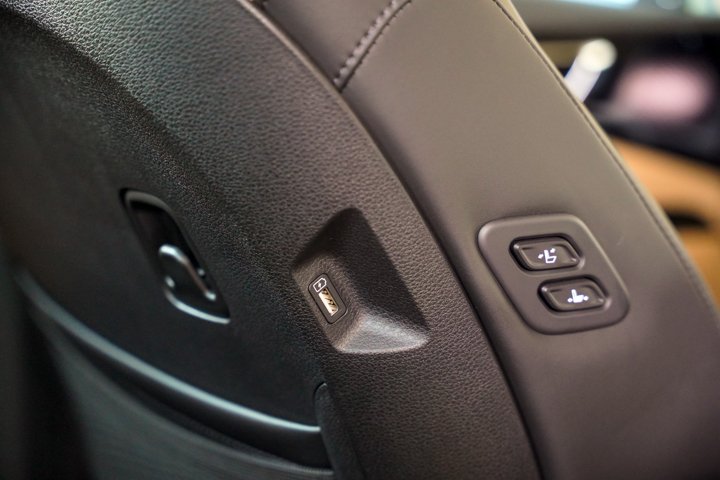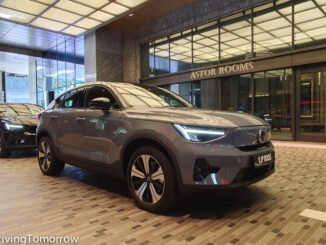
The locally-assembled Kia Carnival is here. Is it ready to be crowned the new King of the MPVs? Get ready to move over Toyota Alphard, Lisa Kuok discovers it could well be
Before the test drive, we wondered what there would be to write about the locally-assembled Kia Carnival. We just drove the imported Carnival a few months ago. The engine, transmission… you can read about that and the drive and handling in our earlier review of the imported Kia Carnival. They are the same in the locally-assembled Kia Carnival and the imported version : 2.2-litre turbocharged diesel, 199bhp, 440Nm of torque, eight-speed auto. The rear lights are now LED and have a new light design.
How different could could it be? A lot, as it turned out. Firstly, some disclosures to get out of the way on pricing.
The seven- and eight-seater locally-assembled Kia Carnivals cost more than the imported 11-seater because they are in the tax category of passenger cars, not commercial vehicles which incur lower duties. The seven-seater is RM261,228.80, while the eight is RM247,228.80. Yet, both look and feel like much more expensive vehicles.
This version of the SUV with sliding doors has its sights aimed at the luxury MPV market, but more attractively priced. As such, it is more luxurious, multifaceted, sophisticated and technologically advanced than the 11-seater.
The choice is now a seven-seater High spec or an eight-seater in Mid or High spec. Does the buyer go full-on comfort or max out on versatility? The Carnival is family-friendly but the features and stylish sophistication also make it appealing for business users as a company limousine or mobile office.
The standard features are LED headlights and daytime running lights, dual power sliding doors, front and rear parking sensors, dual zone automatic air-conditioning in front, single zone automatic air-conditioning in the rear, ISOFIX child seats with anchor tethers, wireless chargers, two 12-volt power outlets, 12.3-inch capacitive touchscreen monitor for the infotainment system with voice recognition, 12-speaker Bose sound system, Apple CarPlay and Android Auto and seven USB ports.
Also standard is the multi-function Smart Proximity key. It enables keyless entry and the individual opening and closing of the sliding doors by remote. The tailgate also opens automatically when the key is detected near the rear.
Standard safety features are also generous: seven air bags, ABS, electronic brake-force distribution, brake assist, electronic stability control, traction control, multi-collision brake control, hill start-assist, auto-hold function, auto door lock, rear occupant alert (more on this later), Safe Exit Assist and ISOFIX child seat anchors. There is also an engine immobiliser.
Mid or High
The seven-seater High has every feature that Kia has to offer. These include advanced driver-assistance systems (read more about the ADAS below), leather upholstery, digital instrument displays, multi-way adjustable front seats with memory function and hot and cold ventilation, dual power sunroofs, and Surround View Monitor. The seats are in a two-two-three configuration with Premium Relaxion Seats in the second row.
The eight-seater High has almost the same features except for leatherette upholstery and no Premium Relaxion Seats. The seats are in a two-three-three layout. The middle seat in the second row now has a three point seatbelt. It was a lap belt in the imported Carnival. More details about the seats later.
The eight-seater Mid has no advanced driver-assistance system. The seats are also leatherette. The front two seats are also multi-way but with less adjustments, no memory function or ventilation. The instrument cluster is TFT-LCD, not digital. A reverse camera replaces the Surround View Monitor. There are no sunroofs.
Advanced Driver-Assistance Systems
The High spec Carnival comes with these advanced safety features, some of which should be a minimum legal requirement in all vehicles. While some features are driver aids, a few keep others on the roads safe from them.
Safe Exit Assist (SEA) sounds an alert and prevents the sliding doors opening to stop passengers getting out if the sensors detect oncoming hazards.
Rear Occupant Alert (ROA) sounds an alarm to remind the driver if there is a rear seat passenger.
In the event of an accident, and an airbag goes off, Multi Collision Braking (MCB) engages automatic braking to bring the car to a controlled stop to prevent a secondary collision. A secondary collision is a second impact after an accident. This occurs when the impact from the first collision causes the driver to control of the vehicle and hit something else.
The automatic headlights have High Beam Assist (HBA) which deactivates the high beam to prevent blinding the drivers of oncoming cars.
Blind-spot Collision-Avoidance Assist (BCA) detects vehicles in the adjacent lanes or coming up from behind and warns the driver. If the bleeping doesn’t catch their attention, there is a flashing red triangle in the wing mirror as well as vibration from the steering wheel.
For those born without eyes at the backs of their heads and telescopic necks, there is Rear Cross-Traffic Collision-Avoidance Assist (RCCA). Radars on the rear corners detect cross traffic coming from the left or right and alert the driver.
Tired of drivers who can’t hold their lane? Lane Keeping Assist (LKA) gives the driver an audible warning when they drift out of their lane. If they ignore it and then Lane Following Assist (LFA) takes over by steering them back within the lane. Lane Following Assist (LFA) uses the front camera to detect the lane’s markings and keep the car driving within the boundaries. If the driver starts to veers to one side, LFA steers the car back gently.
In the daily struggle to stay alert against traffic light beaters or those who view traffic lights as optional, there is Forward Collision-Avoidance Assist (FCA) with Junction Turning. Sensors and cameras scan the road ahead for you. If a hazard is detected, an alert sounds and the brakes are applied autonomously to prevent a collision.
Smart Cruise Control (SCC) maintains the driver’s selected speed but also a safe distance from the vehicle ahead. SCC automatically reduces speed and, stops if necessary, before resuming when the vehicle in front moves forward.
Decisions, decisions
Seven- or eight-seater? The difference between them is in the middle row seats. Hopefully, the choice will be easier for you because we are torn. Both have great appeal as well as advantages.
Who wouldn’t like to travel like a boss? The seven-seater has Premium Relaxion Seats, leather arm-chair style reclining seats with extendable leg rests and heating and cooling ventilation. The seats recline to zero gravity posture – the feeling of weightlessness that astronauts in space experience – that is very soothing. It takes pressure off the lower back and eases tension along the body up to the shoulders. Give back-seat drivers and let the Premium Relaxion Seats lull them into a bliss-filled stupor – while you enjoy the quiet drive.
On the other hand, the flexible seat positioning of the eight-seater makes it incredibly practical. For families, there aren’t many vehicles that can fit five child seats, including three in a row. The second row seats are on individual sliding rails so they can be off-set. Finally, the end of the perennial battle of the elbows. The middle seat can also be folded down and used as a table with two cupholders. The middle seat alone or all three can be turned around to face the third row passengers.
While travelling back to front isn’t for everyone, this is a useful feature. For example, flipping the middle seat to face the rear so someone can give a last minute briefing on the way to a meeting. Or turning all three seats around to make it easier for the third row passengers to get in and out. The layout combinations – and reasons why – are only as limited as the imagination.
The third row seats are narrower and less padded but still comfortable for longer distance journeys. There are cupholders and USB points so they’re not hardship seats. When not needed, the third row seats can be folded away into the floor, making the Carnival a four-/five-seater with very generous leg room and space for luggage. Even with the third row in use, there is boot space for several small bags or a body. Or there is no seats at all – just 4110 litres of flat floor space?
Would I buy a locally-assembled Kia Carnival?
The choices in the MPV market are relatively limited and it’s dominated by the immediately recognisable Toyotas Alphard and Vellfire.
The locally-assembled Kia Carnival has several advantages to break the imported Toyota duo’s popularity. First being the price, followed by advanced safety equipment, performance and arguably, looks. Some people want their MPV t0 look like an MPV.
The Alphard costs RM446,609 which works out at RM185,380.20 more than the seven-seater High spec Carnival. The Vellfire, at RM382,300, costs RM121071.20. For that premium, neither have ADAS. They also have less ISOFIX seats.
In terms of other MPVs in the market, the nearest diesel-powered rival is the imported Hyundai Staria which costs almost RM98,000 more. Also a seven-seater, it is also a 2.2-litre with an eight-speed transmission but has lower output and no ADAS. It is also larger in overall length but, according to manufacturer’s figures, offers less boot space.
Performance from the Carnival is significantly more athletic compared to the Alphard and Vellfire. The Alphard produces a maximum torque of 361Nm compared to 440Nm from the Carnival. This is despite the Alphard having a larger displacement, 3.5-litres versus the Carnival’s 2.2-litres. The Vellfire is even less powerful with 235Nm.
And finally, best of all, the Carnival’s more robust performance doesn’t come with heavy fuel consumption, the biggest advantage of diesel. Whether Euro 5 B10 or B7, at 15.4km/L to the Alphard’s 10.8km/L, the 4.6km/L the savings on the fuel start from the first tankful, even if the Alphard is run on RON 95.
From all angles, it looks like the locally-assembled Kia Carnival is a winner.
| Kia Carnival (eight-seater) MID | Kia Carnival (eight-seater) HIGH | Kia Carnival (seven-seater) HIGH | Toyota Alphard | Toyota Vellfire | |
| Price | RM231,288.80 | RM247,288.80 | RM261,228.80 | RM446,609.00 | RM382,300.00 |
| Capacity | 2151cc | 2151cc | 2151cc | 3456cc | 2494cc |
| Engine | 4-cyl, turbo, diesel | 4-cyl, turbo, diesel | 4-cyl, turbo, diesel | 6-cyl, NA, petrol | 4-cyl, NA, petrol, |
| Gearbox | 8-spd auto | 8-spd auto | 8-spd auto | 8-spd auto | CVT |
| Power | 199bhp | 199bhp | 199bhp | 296bhp | 177bhp |
| Torque | 440Nm | 440Nm | 440Nm | 361Nm | 235Nm |
| Consumption (km/L) | 15.4 | 15.4 | 15.4 | 10.8 | 11.6 |































